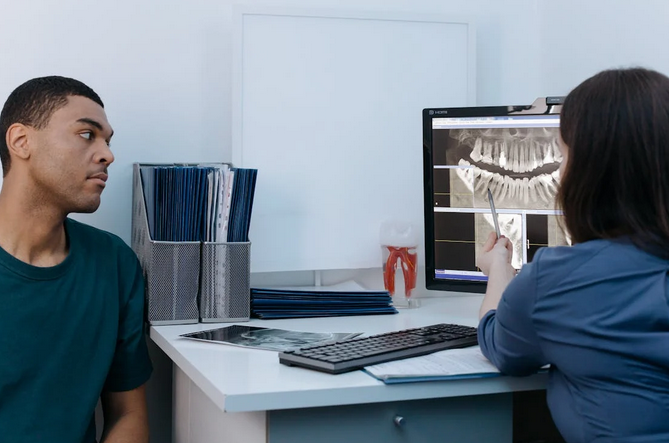Dental X-rays play a vital role in maintaining oral health by allowing dentists to detect issues that may not be visible during a routine examination. The dentist in Kensington generally uses radiographic images to get a detailed view of the teeth, bones, and surrounding tissues, enabling early diagnosis and treatment of dental problems. Understanding the advantages of dental X-rays can help patients appreciate their importance in preventive dental care and ensure they receive the most comprehensive care possible.
Diagnosing Tooth Decay

One of the primary benefits of dental X-rays is the early detection of tooth decay. While a dentist can identify surface cavities during a regular examination, X-rays reveal decay between teeth and under existing fillings. By catching decay early, dentists can intervene with less invasive treatments, preserving more natural tooth structure and preventing more extensive damage.
Identifying Bone Loss and Gum Disease
Dental X-rays are essential for identifying bone loss and gum disease. Periodontal illness can cause the bone supporting the teeth to deteriorate, causing tooth loss if not treated promptly. X-rays provide a clear picture of the bone levels around the teeth, helping dentists diagnose the severity of gum disease and develop an effective treatment plan. Early detection of bone loss can significantly boost the chances of successful treatment and oral wellness.
Detecting Infections and Abscesses
Without X-rays, infections and abscesses in the teeth and surrounding tissues can be challenging to detect. These illnesses can be extremely painful and, if not addressed, can trigger serious health issues. Dental X-rays enable dentists to detect infections early on, allowing for appropriate treatment to avoid infection spread and lower the risk of more serious health conditions.
Assessing Impacted Teeth
Dental X-rays provide a clear view of the position and alignment of impacted teeth, helping dentists determine the best course of action. Whether monitoring the development of these teeth or planning surgical removal, X-rays are invaluable in ensuring optimal outcomes and preventing complications.
Monitoring Jaw Development and Alignment

Dental X-rays are crucial for monitoring jaw development and alignment for younger patients. They help dentists track the growth of the jawbone and the position of emerging teeth, identifying potential issues early on. This information is essential for planning orthodontic treatments, as it allows for timely intervention to correct alignment issues and ensure proper jaw development.
Detecting Oral Cancer and Other Abnormalities
While a visual examination can detect specific indicators of oral cancer, X-rays show changes in the bones and tissues that may suggest the development of tumors or cysts. Early identification of oral cancer increases the likelihood of effective treatment and recovery.
Evaluating the Success of Dental Procedures
X-rays evaluate their success after certain dental procedures, such as root canals or implants. They provide a detailed view of the treated area, allowing dentists to guarantee that the procedure is successful and that there are no complications. Regular post-procedure X-rays help monitor healing and identify any issues requiring further attention.
By understanding the importance of dental X-rays, patients can appreciate their value in preventive dental care and ensure they receive the most comprehensive care for their oral health needs. Regular dental X-rays, routine check-ups, and excellent oral hygiene practices are vital to achieving and maintaining long-term oral health.

